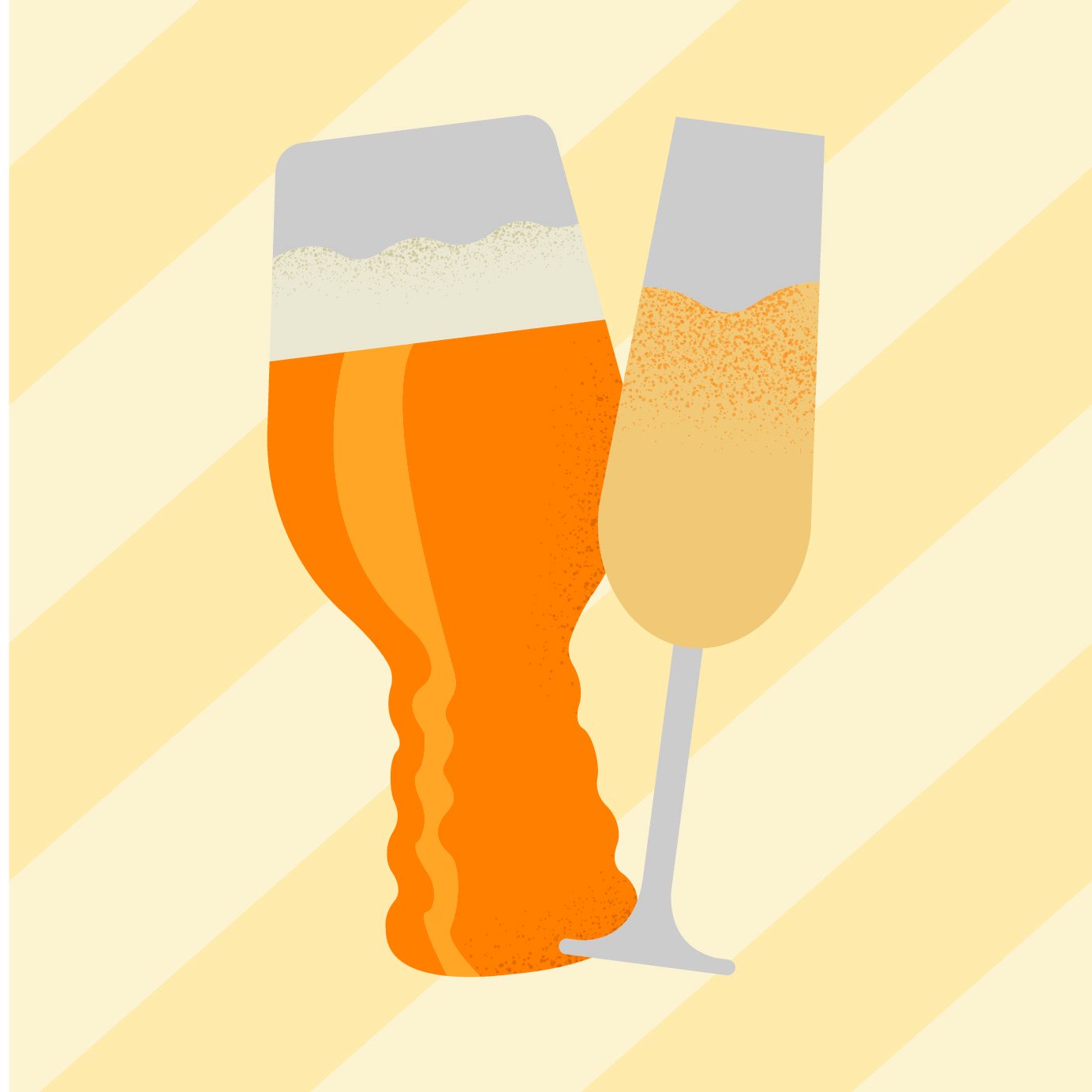“There’s no mistaking that we are living in the heyday of IPA,” Dick Cantwell, brewer and author of “Brewing Eclectic IPA: Pushing the Boundaries of India Pale Ale,” says.
He’s absolutely correct. The Brewers Association ranks IPAs just behind American lagers and light lagers in nationwide popularity. Beer styles within the category span all-out hop bombs, lower-ABV session IPAs, and juicy, New England-style IPAs. Since kickstarting the craft beer movement in the 1990s, IPAs have been among the most innovative styles.
“I think [since] IPAs have taken a foothold, people are now pushing the envelope in different ways,” says Joe Kurowski, senior brewing manager at San Diego’s White Labs. “It seems a natural evolution to me that the brewers will continue to innovate within styles that they made popular in the first [place].”
Now, IPAs are getting a(nother) makeover. Champagne-inspired India Pale Ales, dubbed “Brut IPAs,” are a sparkly, spritzy rebuff to those bitter bombs of previous years. Born in California, Brut IPAs are in some ways the West Coast answer to the rise and now-national footprint of New England’s “hazy” IPAs.
Brut IPAs are extra effervescent, pale yellow, perfectly clear, and intensely aromatic. They are also bone-dry, often finishing at or below zero Plato (the scale that brewers use to estimate finishing “dryness” in a beer). Dryness of this magnitude requires the use of an amylase enzyme that helps the yeast fully break down any residual sugars left during the brewing process. This, mixed with an emphasis on dry-hopping to avoid bitterness while bumping up the hop aroma, is what causes Brut IPAs’ signature spritzy mouthfeel.
With more people “detoxing” from extremely hoppy beers in favor of more refreshing, lower-alcohol craft lagers and ales, these approachable brews stand to convert wine drinkers to beer, and beer drinkers back to balance.
“I think [a Brut IPA] could be broadly appealing for different reasons,” Kurowski says. “It’s dry and floral, no bitterness, with plenty of aroma.”
As a purveyor of yeast strains and scientifically focused in-house beers, White Labs is at the intersection of biochemistry and beer — the perfect operation to tackle this offbeat brew. But they’re far from the first or only ones taking on the style.
Brewmaster Kim Sturdavant, at Social Kitchen & Brewery in Inner Sunset, San Francisco, is credited with creating the style last year. He came up with the idea to brew an IPA that finished ultra-low on the Plato scale after speaking with the brewer at nearby Cellarmaker Brewing Company.
“[I] always thought it would be cool to use it to make an IPA that finished at zero,” Sturdavant says. “The idea was to push balance to the extreme, and make a ‘rule’ to be as light in color as possible.” Thus, the Brut IPA was born.
Now Brut IPAs are popping up in Chicago, (Mega Dry by Maplewood Brewing Company), Orange County, Calif. (Brut by the Bay by Green Cheek Brewing Company) and Denver (Brut Li by FERMÆNTRA).
“Pale, sparkling, refreshing, and bursting with hops, sounds good, right?” Sturdavant says. The burgeoning style is still unofficial, according to the Beer Judge Certification Program, and brewers across the country are developing it with different hop additions, malt varieties, and more.
“This attention is helping me be a better brewer, which is something I’m always striving to do,” Sturdavant says.
Although Brut IPAs are the toast of many craft brewers, don’t expect to see them on your local grocery store shelf anytime soon. As with most IPAs, these beers are best served within three months, and ideally within a few weeks. Freshness is fleeting, just like summer itself.
Where to Try Brut IPAs
Maplewood Brewing Company, 2717 N. Maplewood Ave., Chicago
Social Kitchen and Brewery, 1326 Ninth Ave., San Francisco
Temescal Brewing, 4115 Telegraph Ave., Oakland, Calif.
FERMÆNTRA, 1715 E. Evans Ave., Denver
